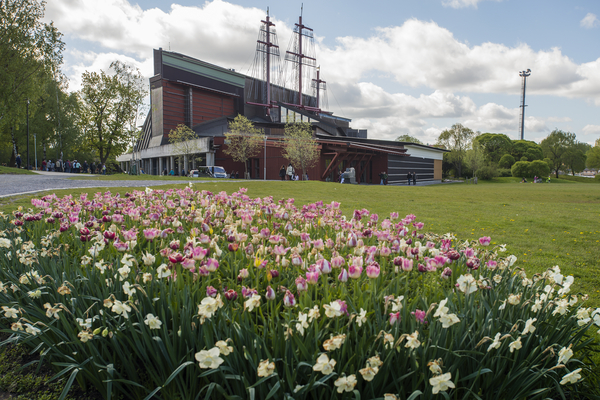Share to





Vasamuseet är ett av Skandinaviens mest välbesökta museer. Här finns det unikt välbevarade örlogsskeppet Vasa från 1628 i all sin prakt, utsmyckad med hundratals träskulpturer. Utställningarna i museet berättar om människorna ombord, det tidiga 1600-talets Sverige och hur skeppet återupptäcktes och bärgades efter 333 år på botten i Stockholms ström.
Om Vasamuseet
Efter att Vasa bärgades 1961 visades hon först på Wasavarvet, nära Liljevalchs konsthall på Djurgården i Stockholm. 1987 började ett nytt museum att byggas på Galärvarvet på Djurgården. 1990 invigdes Vasamuseet och det blev snart en av Sveriges kändaste byggnader.
När Vasa sjönk under sin jungfrufärd 1628 var det en händelse som många ville skulle falla i glömska så fort som möjligt. Idag, flera hundra år senare, är det felbyggda skeppet världsberömt. Vasa är en av svensk historias märkligaste framgångssagor.
På Vasamuseet pågår forskning som spänner över flera ämnesområden – om människorna ombord, kläderna de bar och livet de levde samt om själva bevarandet av skeppet och dess upphittade föremål.
Vasamuseet ingår i myndigheten Statens maritima och transporthistoriska museer tillsammans med Marinmuseum i Karlskrona, Sjöhistoriska museet och Vrak – Museum of Wrecks i Stockholm samt Järnvägsmuseet i Gävle.
Vasamuseet önskar att samlingarna används. Ladda gärna ner våra bilder och använd vidare. Varje bild har en licens som anger hur den får användas. Till bilden ska alltid upphovsperson (fotograf eller konstnär) och källa anges. Exempelvis: Fotograf: X X:sson, Vasamuseets samlingar.
På Statens maritima och transporthistoriska museer värnar vi om din personliga integritet. Besök myndighetens hemsida för att läsa om hur vi arbetar med hantering av personuppgifter.
